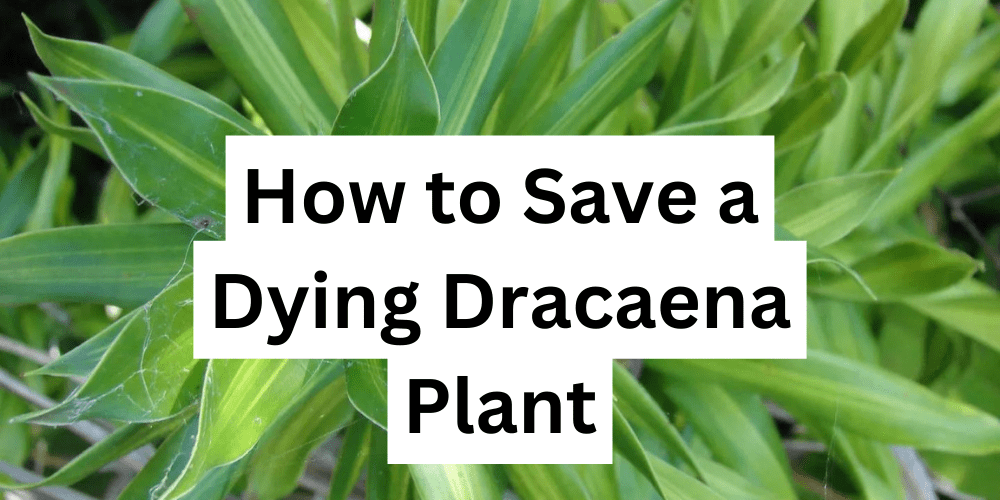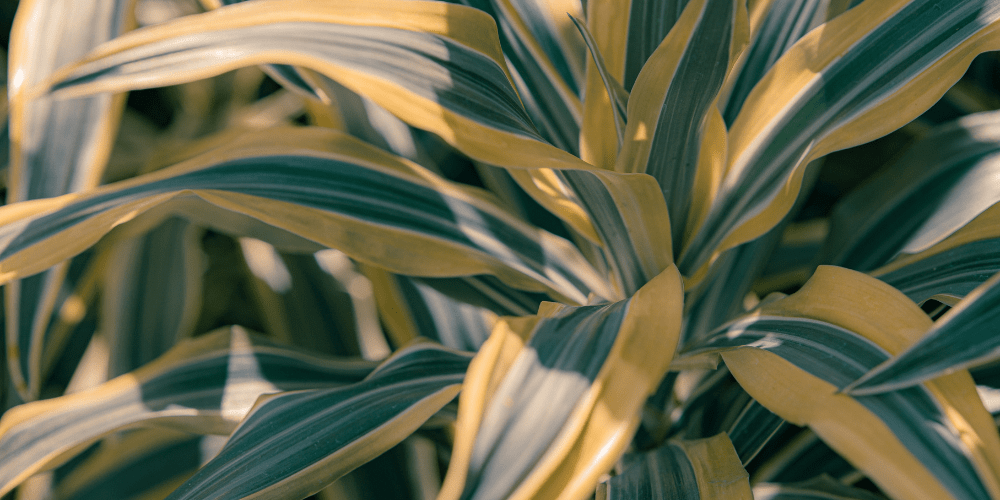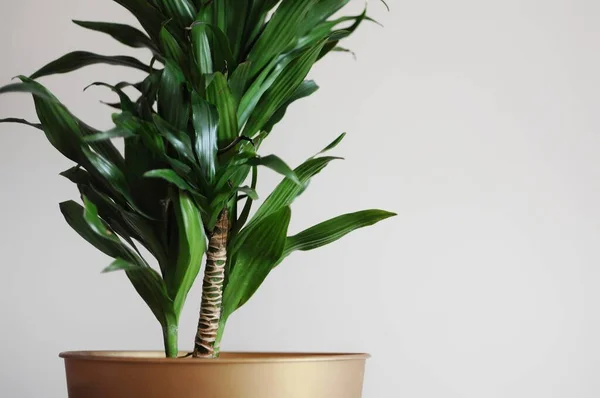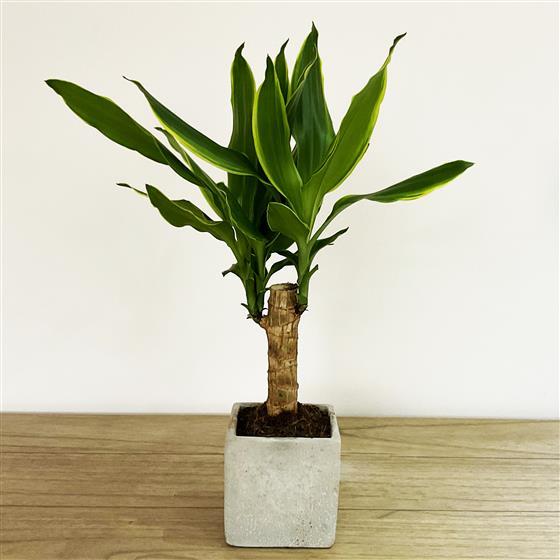
Growing indoor plants, like the Dracaena plant, is fun and adds beauty to your space. Dracaena plants are popular houseplants because they look nice in our homes. They can grow up to four feet tall and have green leaves, but some types have leaves with white, yellow, pink, or red spots. They also help keep the air clean.
Even though Dracaena plants may seem simple, they are tough and easy to care for. If you want to keep your Dracaena healthy and happy, read on for tips on saving a plant that’s not doing well. In this blog post, we’ll teach you how to save a dying dracaena plant that’s not doing well. If your Dracaena is not doing well, it might worry you. Don’t worry too much!
Dracaena plants are tough and look great with their colorful leaves. But sometimes, even strong plants can have problems. If you don’t take care of them properly, the leaves can turn brown, which doesn’t look good. We’re here to help your dying dracaena plant thrive, so let’s learn how to make it happy again!
11 Reasons Why Your Dracaena Plant is Dying

1. Neglecting Regular Watering
The health of dracaena plants is closely tied to soil moisture levels. Signs of dehydration include drooping leaves and the emergence of breathing holes at the base of the stem. To maintain optimal conditions, water the plant thoroughly, ensuring excess water drains from the pot’s bottom. Avoid allowing the plant to sit in standing water, as this may lead to yellowing leaves, indicating potential over-watering.
2. Temperature Sensitivity
Dracaena plants thrive in moderate to bright, indirect sunlight, with the ability to tolerate some shade. It’s crucial to avoid exposing them to temperatures below 40 degrees F or above 100 F. High humidity levels should also be avoided, and the leaves should be kept dry by practicing moderate watering habits.
3. Inadequate Fertilization
While dracaena plants are not heavy feeders, occasional fertilization every 1-2 months during spring and summer is essential. Follow the instructions on your plant food package or use a quarter of the recommended dose for other houseplants, unless signs of malnutrition, such as yellowing leaves, are observed.
4. Soil or Water pH Imbalance
Dracaenas prefer slightly acidic, well-draining soil. Adjust the pH using water-soluble fertilizers, such as Miracid, to decrease acidity or water glass to increase acidity. Additionally, incorporating organic mulch like peat moss or oakmoss can raise acidic levels for optimal growth.
5. Excessive Sun Exposure
Direct sunlight, especially for plants accustomed to lower light levels, can lead to leaf scorching in dracaena plants. While they tolerate some shade, avoid placing them in complete shade or direct sunlight. Proper placement is crucial to prevent damage to the leaves.
6. Neglecting Transplantation
When a dracaena plant outgrows its pot, transplantation is necessary. Ensure the new pot has drainage holes to prevent waterlogging, and leave at least 2 inches of space between the plant’s stem base and the pot’s rim for unhindered growth.
7. Combatting Stem Rot
Stem rot often occurs due to cold drafts, wet soil, and overwatering. Inspect the stem for dark or slimy patches, indicating rot. Trim away affected areas down to healthy tissue, avoiding damage to the stem base
8. Pest Infestations
Common pests like mealybugs and spider mites can cause yellowing or distorted leaves. Combat these pests by wiping the leaves with neem oil or insecticidal soap.
10. Overcrowding and Insufficient Ventilation
Dracaena plants dislike crowded conditions. Planting them too closely together can result in stunted growth and overall decline. Provide adequate space, use organic mulch, and ensure proper ventilation to maintain plant health and prevent root rot.
11. Inadequate Light Conditions
nsufficient light can adversely affect the health of dracaena plants. While they can tolerate some shade, prolonged exposure to low light levels may lead to sparse growth and leggy stems. Ensure your dracaena receives moderate to bright, indirect sunlight to promote healthy foliage and vibrant growth. If the plant shows signs of stretching or leaning towards light sources, consider repositioning it to a location with better illumination.
Related article :How to Successfully Plant Pothos in Your Aquarium
12 Ways on How to Save a Dying Dracaena Plant
We’ve listed twelve ways to save your dying dracaena plant. Let’s explore these tips together and bring your plant back to health

1. Reposition Your Dracaena
Over time, dracaena plants require a change of environment, necessitating either repotting or transitioning them to an outdoor setting. An indication for this change arises when the plant outgrows its current pot, typically occurring after about five years for most Dracaena varieties, though the timeline can vary depending on factors such as climate, light exposure, and watering conditions.
2. Adjust Watering Frequency
Dracaenas thrive when the soil is allowed to moderately dry between waterings. To maintain optimal moisture levels, wait until the soil feels dry to the touch before rewatering. If uncertain about the watering needs of your Dracaena, give it an additional day or two before reassessing.
3. Optimize Placement in a Well-Lit Area
Ensuring your Dracaena receives ample, indirect sunlight is crucial for its well-being. Choose a location with bright, indirect sunlight throughout the day, and rotate the plant weekly to provide all sides with equal light exposure, preventing leaf burn and damage.
4. Provide Regular Fertilization
Due to the typically acidic nature of home soil, supplement your Dracaena’s nutrition with a diluted fertilizer solution monthly. Halve the recommended fertilizer dosage to avoid over-fertilization.
5. Promote Air Circulation
Prevent the accumulation of mold, bacteria, and pests on Dracaena leaves by ensuring proper air circulation. Ensure adequate drainage to prevent soil-moisture-related issues and avoid wetting or smothering the foliage near the soil.
6. Prune Yellowing Leaves
To maintain overall plant health, promptly remove yellowing leaves from your Dracaena. Regularly trim back dying foliage and consider relocating the plant to a shaded area during leaf decline.
7. Provide Sun Exposure
While Dracaena plants adapt well to low-light conditions indoors, exposing them to sunlight for at least an hour daily can be beneficial. Sunlight exposure allows the plant to absorb ultraviolet rays, potentially addressing issues like discoloration and yellowing.
8. Trim Stems Strategically
Optimal pruning for Dracaena involves cutting dead or brown stem tips at their base. This encourages growth in the branches above, preventing the plant from becoming top-heavy. Avoid pruning the plant’s natural growth tip.
9. Ensure Adequate Drainage
To prevent rapid aging and browning of leaves, maintain good drainage for Dracaena plants. Elevated planters or pot feet can help address drainage issues, ensuring that the soil doesn’t remain overly moist.
10. Provide Nutrient-Rich Soil
While monthly fertilization is generally sufficient, consider more frequent feeding or replenishing the soil with nutrients to enhance the growth and vitality of your Dracaena.
11. Pot Replacement
Periodically changing the pot for your Dracaena, especially if the plant appears pale and lifeless, can rejuvenate its health. Fresh soil and a new pot can provide the necessary nutrients for robust growth.
12. Adjust Watering in Winter
During the winter months, reduce watering for your Dracaena, especially if cuttings show signs of dieback. Move the plant to a shaded or unheated room to conserve nutrients. If there’s remaining green foliage at the stem’s base, water sparingly at half-strength every few weeks.
Helpful Tips to Care for Your Dracaena Plant
Dracaena plants grace homes with their stunning foliage and impressive height potential, making them beloved houseplants. Like many flowering plants, they demand dedicated care for their well-being. Explore exclusive insights on how to save a dying dracaena plant and ensuring the continued vitality of your plant. Uncover unique tips to revive and maintain a healthy dracaena!

1. Watering Strategies for Your Dracaena Plant
Dracaenas thrive in diverse climates, contributing to their popularity. Consequently, a one-size-fits-all watering approach isn’t feasible. Instead, keen observation becomes crucial to gauge the plant’s water needs. After watering, ensure the soil is sufficiently moist, allowing excess water to drain from the pot’s bottom. If the soil remains dry after a week, it’s time for another watering.
2. Ideal Light Conditions
Moderate to bright indirect light suits dracaena plants, promoting healthy growth. Should your plant exhibit signs of stretching or weakness, consider relocating it to a sunnier spot. However, exercise caution to prevent sunscald, especially if the leaves appear desiccated or curled.
3. Fertilizing Your Dracaena
The presence of scale insects and mealybugs may afflict dracaena plants, manifesting as yellowing leaves, stunted growth, or curled foliage. To address this issue, manually remove the infested areas by gently rubbing or using a cotton swab dipped in alcohol.
5. Repotting Rituals
Refresh your dracaena’s soil every two years through the process of repotting. Utilize a cotton swab dipped in rubbing alcohol to address pests. Alternatively, place the plant in a water dish, then relocate it to the sink for a thorough cleansing, using an old toothbrush to scrub off any insects.
6. Mindful Humidity Levels
Dracaena plants generally adapt well to indoor conditions but thrive when humidity is kept in check. Monitor the moisture in the air, especially during dry seasons or in centrally heated spaces, as excessively low humidity can lead to browning leaf tips and edges. Consider employing strategies such as placing a tray of water near the plant, regular misting, or using a humidifier to maintain an optimal humidity range, fostering a healthier environment for your dracaena.
FAQs
What does an overwatered dracaena look like?
When a dracaena is overwatered, the leaves may show signs of distress. Look for symptoms like yellowing leaves, wilting, and a generally droopy appearance. Overwatering can lead to root rot, causing the plant to struggle with nutrient absorption and resulting in a noticeable decline in overall health. To prevent overwatering, ensure proper drainage and allow the top inch of soil to dry out before watering again.
Why Are the Leaves of My Dracaena Turning Yellow?
The yellowing of dracaena leaves can be attributed to various factors. Common reasons include overwatering, which leads to root rot, or underwatering, causing dryness and stress. Exposure to direct sunlight, nutrient deficiencies, or pests can also contribute to yellowing. To address the issue, assess the plant’s watering routine, adjust light conditions, and consider providing balanced fertilizer. Regular inspection for pests and maintaining optimal care conditions will help restore the dracaena’s vibrant green foliage.
Can Dracaena Plants Grow in Low Light Conditions?
Dracaena plants are known for their adaptability, making them suitable for low light conditions. While they prefer medium to bright indirect light, they can thrive in lower light settings. However, growth may slow, and vibrant colors may fade in such conditions. To optimize their health, place Dracaena plants in a location with filtered or artificial light, rotate them occasionally, and monitor their overall well-being to ensure optimal growth even in low light environments.
Conclusion
Caring for the Dracaena plant can be both rewarding and challenging. Adequate watering and ample sunlight are essential for its well-being. If you’re facing challenges in reviving a fading Dracaena, consider implementing the tips provided above!
Fear not, your Dracaena plant can be rescued, promising years of lush greenery ahead. Simply follow the outlined steps, and soon you’ll enjoy a thriving and healthy dracaena. If you’re keen on this journey, reach out – we’re here to assist!
I’m Zaib Bilwal, and my journey into the world of home styling began in my school days, where I enjoyed rearranging my space. After graduating in 2015, I turned my passion for furniture refurbishing into a business. Today, it’s evolved into an interior design blog filled with inspiration and practical advice. My mission is simple, to make design accessible and enjoyable, offering you the tools and inspiration to create your dream home.